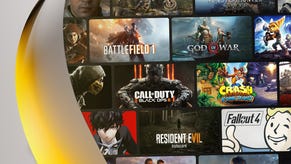What does a mature market look like in mobile?
App Annie touts explosive mobile growth in 2016, says revenue per user for top games jumped dramatically last year
Tracking firm App Annie today released a Retrospective Report for 2016, calling it "a Renaissance year in app monetization and engagement" with total time spent using apps up 20% to 900 billion hours, and total iOS and Google Play downloads jumping 13 billion over the total from 2015.
Interestingly, the presumably mature market of the United States saw one of the larger jumps in app usage, with a 25% jump in total time spent year-over-year. App Annie director of marketing insights Amir Ghodrati spoke with GamesIndustry.biz recently to discuss the numbers, the evolution of gaming apps specifically, and how the concept of a mature market works a little differently in mobile.
"Maturity in mobile is definitely relative compared to other industries," Ghodrati said. "But there still are trends you'll see. When a country is younger in its mobile stages, its downloads will be growing quite quickly and those downloads will be much more heavily skewed toward gaming. And as the market matures, downloads will still continue to increase, just not as quickly."
Even as markets mature and games take a backseat in terms of what gets downloaded, to this point they've continued to bring in the lion's share of money. Ghodrati said even though games only account for about 40% of downloads worldwide on Google Play and 30% on iOS, they still make up 90% of the revenue on the former platform, and 75% on the latter.
"As a market matures, games still continue to grow; it's just that they're always the early adopters," Ghodrati said. "Gaming companies tend to be ahead of everyone else when it comes to innovation, putting in new features, being able to localize, and being able to adapt. So what happens is [games] are the ones that tend to be used most at first."
As for what makes a market mature, Ghodrati said it's all about infrastructure. Flashy new phones with novel features may boost engagement, but they don't move the needle as much as improving the capacity of people to get online for longer and in more places, or simply making it easier for them to spend money through their phones.
"Where you will see spikes is when the barrier to purchase or friction is smoothed out, where it's easier to do carrier billing or they start accepting credit cards," Ghodrati said. "Things like that, that fundamentally change the way in which you go about making a purchase, those types of transactions become much more prevalent once advancements like that take place."
The development of infrastructure like that is the biggest factor in the growth of emerging markets, Ghodrati said, pointing to India, Brazil, and Indonesia as a trio with massive potential in the coming years. In fact, India saw more downloads through Google Play than any other country last year, surpassing the US with more than 6 billion apps installed.
"India has surpassed the US as the second largest smartphone market, but they still have smartphone penetration below 30%," Ghodrati noted. "So that just shows how much more room to grow there is and how important it is for people to get involved early."
Specific to mobile games, Pokemon Go was understandably a big part of the story of 2016. App Annie's report noted that it reached $500 million in revenues in its first two months of release. Despite that success, it didn't seem to come at the expense of usage or revenue of other games, suggesting its success extended far beyond what the report called "traditional mobile gamers." Ghodrati pointed out that even though Pokemon Go only released in July, it still was the most downloaded game of the year, and made the third most revenue among games.
Even if you were to take Pokemon Go out of the equation, Ghodrati said it would still have been a banner year for mobile gaming, even as some of the underlying behaviors of the market are changing.
"If you just look at the top 30 games by revenue in Japan, China, the United States, South Korea and the UK, the amount of revenue per user for those games has gone up dramatically from 2015 to 2016," Ghodrati said. "It went up a lot from 2014 to 2015, but we saw a very dramatic spike in this past year."
He added, "You have games that continuously do well that you see up there every year. Clash of Clans, Puzzle & Dragons, Candy Crush Saga, these games do well every year. What you're seeing now is that as these big games get released, the length of that maturity cycle for the games has also increased. Before you would see downloads gradually ramp up. Now you've got these big releases, and games will get a lot of downloads early so they're reaching a lot of people very, very quickly."
Top 5 Games by Downloads 2016, Worldwide iOS and Google Play Combined:
- Pokemon Go
- Piano Tiles 2
- Subway Surfers
- Slither.io
- Clash Royale
Top 5 Games by Revenue 2016, Worldwide iOS and Google Play Combined:
- Monster Strike
- Clash of Clans
- Pokemon Go
- Game of War - Fire Age
- Clash Royale






.jpg?width=291&height=164&fit=crop&quality=80&format=jpg&auto=webp)

